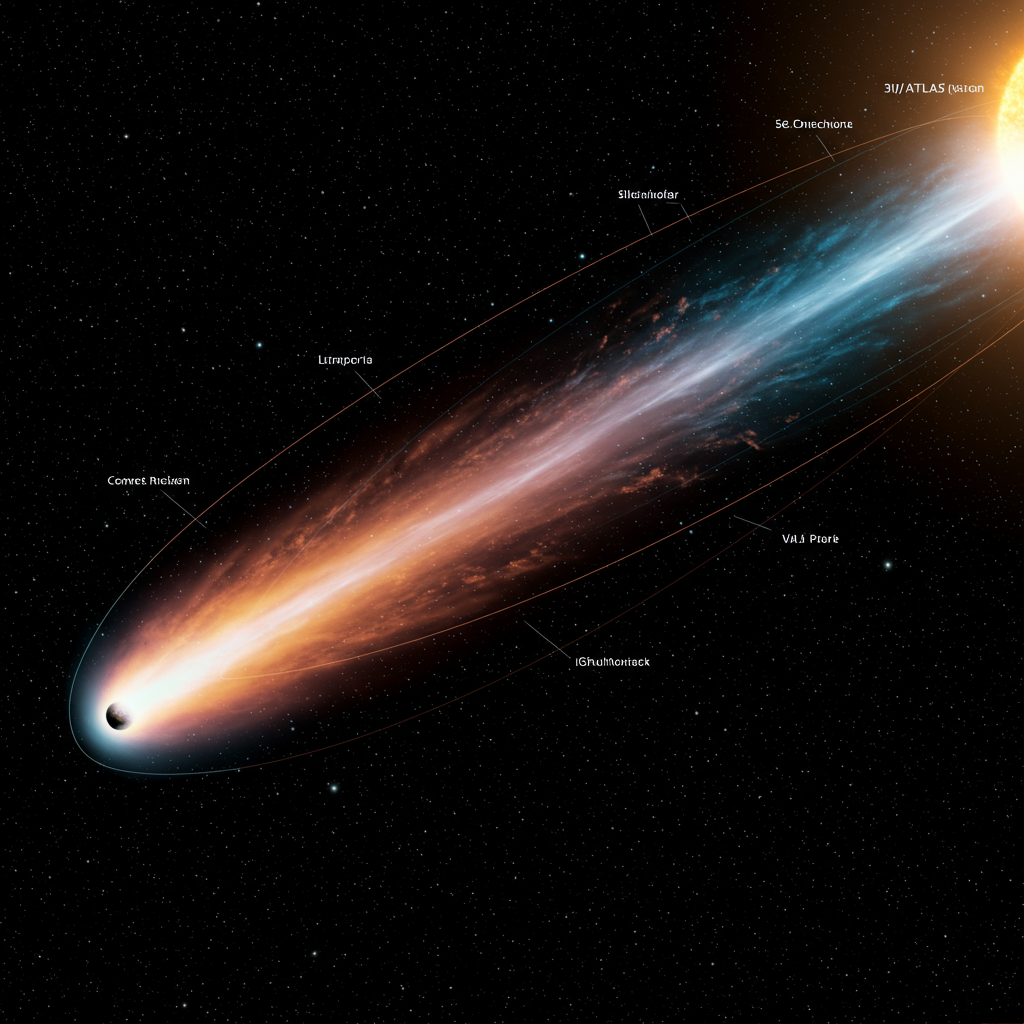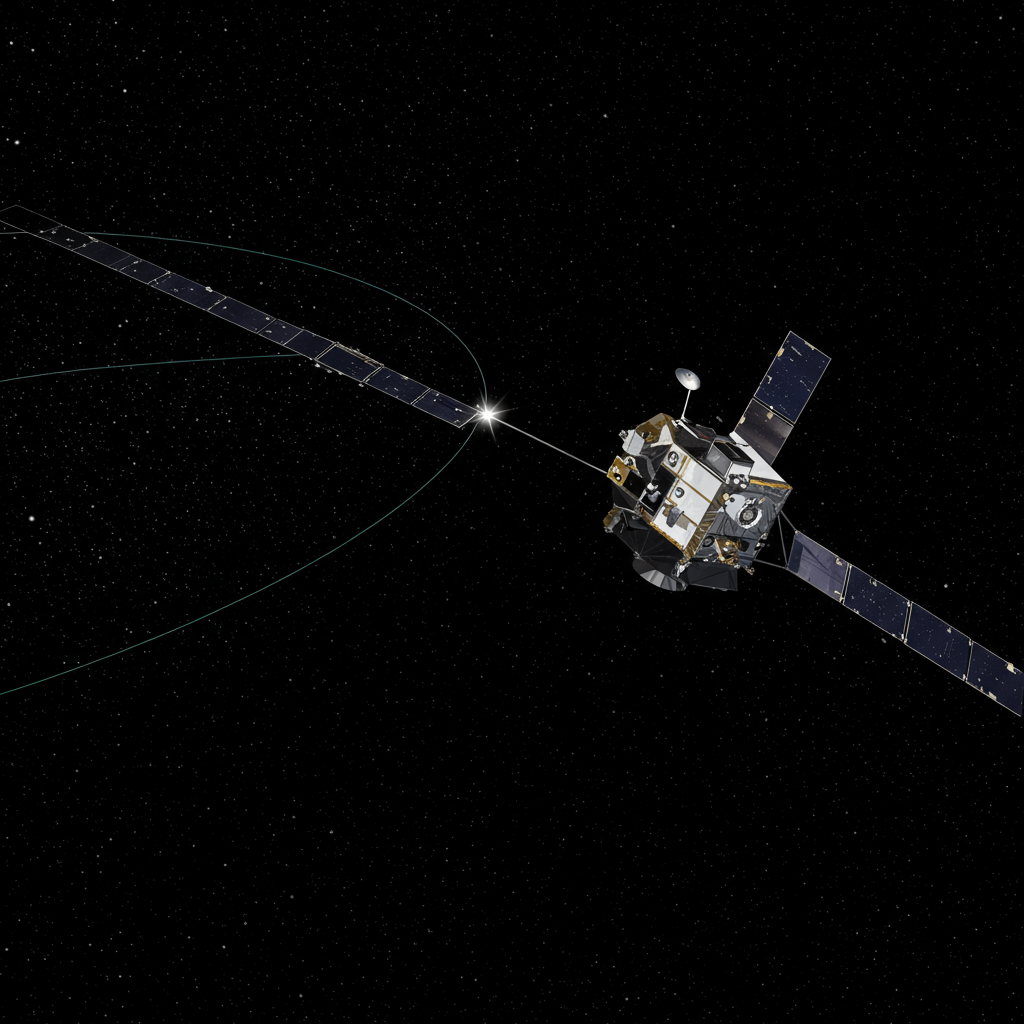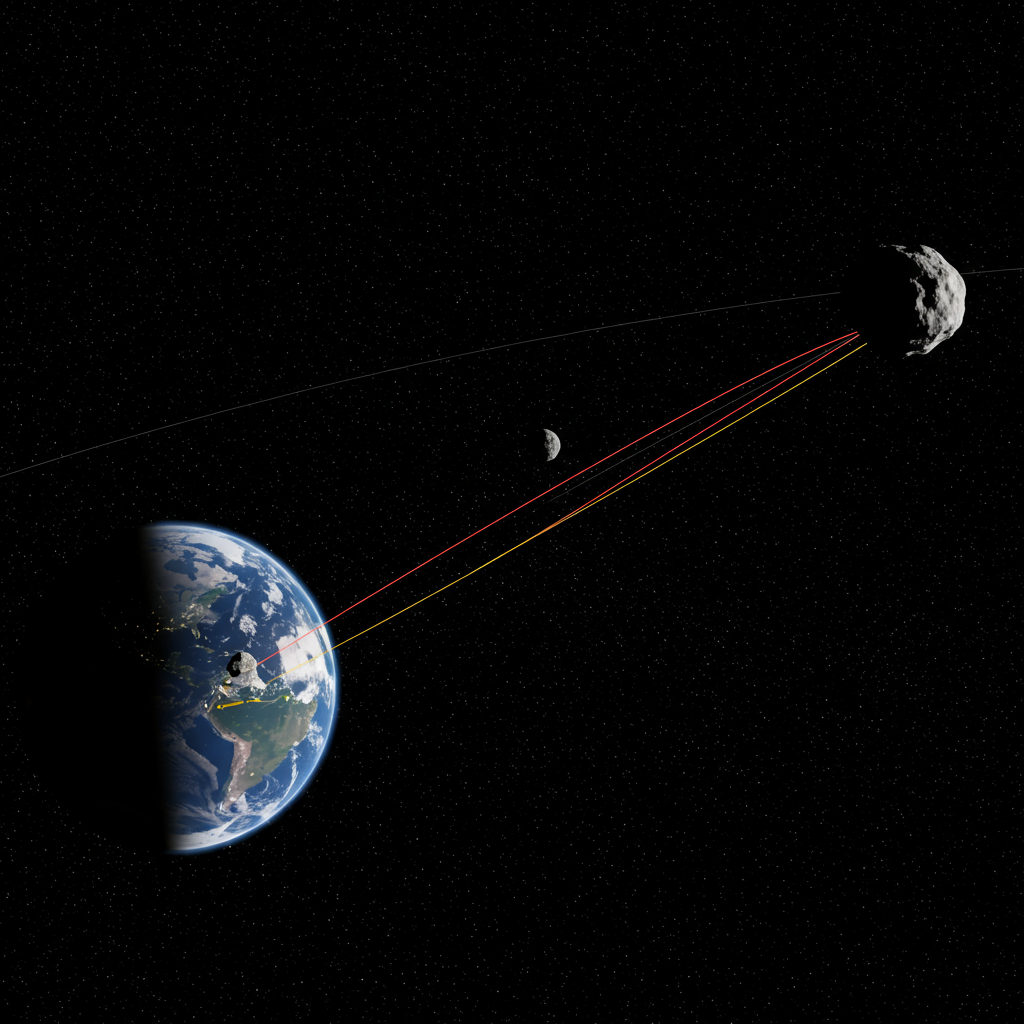A cosmic visitor unlike most others is currently traversing our solar system. Astronomers worldwide are closely tracking a newly confirmed object designated 3I/atlas. This celestial body is believed to be only the third interstellar object ever detected passing through our cosmic neighborhood. Its arrival offers scientists an extraordinary opportunity to study material originating from beyond our sun’s gravitational pull. Unlike most objects we observe, 3I/ATLAS hails from another star system entirely. It is currently harmlessly making its way through our corner of the galaxy.
The Discovery of a Cosmic Intruder
The story of 3I/ATLAS began between June 25 and June 29. Data collected by the Asteroid Terrestrial-impact Last Alert System (ATLAS) telescopes first captured its presence. These telescopes are strategically located in both Hawaii and South Africa. They constantly scan the night sky for moving objects. The initial detection flagged an unusual trajectory and speed. This prompted further investigation.
The potential discovery was quickly shared with the wider astronomical community. Confirmation followed rapidly from key organizations. These included NASA’s Center for Near Earth Object Studies (CNEOS) and the International Astronomical Union’s Minor Planet Center. Initially, the object was given the provisional designation A11pl3Z. Scientists weren’t immediately sure if it was a rocky asteroid or an icy comet. Early estimates for its size also varied significantly, ranging from up to 12 miles (20 kilometers).
Confirming the Interstellar Nature
The true significance of A11pl3Z became clear with more observations. On July 2, astronomers officially confirmed its interstellar origin. With this confirmation came a new official name: 3I/ATLAS. The ‘I’ signifies its interstellar nature. It was also definitively classified as a comet. This revised classification superseded the initial uncertainty.
The primary evidence for its interstellar origin lies in its highly unusual path and extreme speed. Objects originating within our solar system follow predictable elliptical orbits around the sun. Interstellar objects, however, travel on hyperbolic trajectories. They enter, loop around the sun (or pass by), and exit, never to return. 3I/ATLAS is moving at approximately 152,000 mph (245,000 km/h). This speed is far too high to be captured by the sun’s gravity. Its trajectory confirms it originated from elsewhere. Astrophysicist Josep Trigo-Rodriguez was among the early voices supporting this hypothesis. Based on the object’s odd path and speed, he estimated its size at roughly 25 miles (40 kilometers) across. This estimate differs from initial ATLAS size estimates, highlighting the need for continued study to nail down its precise dimensions and characteristics.
Tracking 3I/ATLAS’s Journey
3I/ATLAS is now actively being monitored by scientists worldwide. It is currently situated near Jupiter. This places it hundreds of millions of miles away from Earth. Its trajectory is currently carrying it towards the inner solar system. Specifically, it is moving in the direction of Mars.
Astronomers have calculated key points in its upcoming journey. The object is expected to make its first notable close approach to a planet on October 3. It will pass relatively near Mars on this date. Its closest point to the sun, known as perihelion, will occur on October 23. At perihelion, 3I/ATLAS will be approximately two times the Earth-sun distance away from the sun. Scientists emphasize that the object poses absolutely no threat to our planet. During its closest approach to the sun, Earth will be safely positioned on the opposite side of the star. 3I/ATLAS is anticipated to make its closest approach to Earth sometime in December. This will happen as it travels back out of the solar system.
Why Interstellar Objects Are So Important
Discovering interstellar visitors is incredibly exciting for astronomers. Objects like 3I/ATLAS are essentially free samples from other star systems. They can provide invaluable clues about how planets and smaller bodies form around other stars. Their composition might differ significantly from the comets and asteroids originating in our own solar system. Our solar system’s comets primarily come from the distant Oort Cloud or the Kuiper Belt.
Studying the chemical makeup of 3I/ATLAS could reveal details about the gas and dust cloud it formed from. It might also tell us about the conditions in its parent star system. Detecting these objects confirms a long-held theory. Countless objects are likely ejected from star systems during their formation and evolution. They then wander the vast emptiness between stars. Finding only a handful so far highlights how rare it is for one to pass close enough for us to spot it.
The Precedent: Oumuamua and Borisov
Before 3I/ATLAS, only two other interstellar objects had been definitively confirmed. The first was ‘Oumuamua. Discovered in 2017, its name is Hawaiian for “scout.” It was named in honor of the Hawaiian observatory that found it. ‘Oumuamua was initially classified as an asteroid due to its appearance. However, later observations suggested it might have characteristics of a comet. Its highly elongated shape also sparked significant scientific debate.
The second confirmed interstellar visitor was 2I/Borisov. Discovered in 2019, it was classified as a comet from the outset. Both Oumuamua and Borisov provided fleeting glimpses of alien solar systems. However, they were detected relatively late in their passages. This limited the time scientists had to study them in detail.
Opportunities for Studying 3I/ATLAS
The discovery of 3I/ATLAS presents a unique scientific opportunity. Astronomers are better equipped to study this object than they were its predecessors. Tracking capabilities have improved significantly. Powerful telescopes are available or coming online soon. Researchers plan to utilize various instruments in the coming weeks and months. They hope to gather more data on its precise size, shape, rotation, and composition.
The Vera C. Rubin Observatory is a powerful optical telescope. It is expected to be operational around the time 3I/ATLAS is closest to Earth. This observatory is particularly well-suited for tracking fast-moving objects. There’s even discussion about using NASA’s Mars rovers to attempt to photograph the object. This could happen during its close pass by the Red Planet. Some scientists, like Avi Loeb, have even suggested using the James Webb Space Telescope. He proposes searching for signs of “non-gravitational acceleration.” This highly speculative idea could potentially indicate artificial propulsion, though it is overwhelmingly likely to be a natural cometary outgassing effect. Regardless of speculative ideas, the opportunity to study a pristine sample from another star system with modern tools is invaluable.
Frequently Asked Questions
What is 3I/ATLAS and why is it special?
3I/ATLAS is a celestial object that has been confirmed to have originated from outside our solar system. It is classified as an interstellar comet. Its significance lies in its rarity; it is only the third such object ever detected passing through our solar system. Studying it provides scientists with a unique chance to analyze material from another star system. This can offer insights into planetary formation processes beyond our own sun.
Where is 3I/ATLAS now and where is it headed?
As of recent observations, 3I/ATLAS is located near Jupiter, hundreds of millions of miles away. It is currently traveling towards the inner solar system. Its path will take it past Mars around October 3. It will reach its closest point to the sun on October 23, passing at a distance of about two Earth-sun distances. It will then head back out of the solar system, making its closest approach to Earth in December as it departs.
Is 3I/ATLAS dangerous to Earth?
No, scientists have confirmed that 3I/ATLAS poses no threat to Earth. Its calculated trajectory shows that it will not come dangerously close to our planet. During its closest approach to the sun, Earth will be on the opposite side. When it is closest to Earth in December, it will still be at a safe distance as it exits the solar system.
Conclusion
The arrival of 3I/ATLAS is a landmark event in astronomy. This rare interstellar comet offers a precious opportunity. Scientists can gain unprecedented insights into the universe beyond our immediate neighborhood. Its passage through our solar system is harmless but incredibly informative. As tracking continues, we can expect to learn much more about this intriguing visitor. Future observations using powerful telescopes will help unravel its secrets. The study of objects like 3I/ATLAS helps expand our understanding of cosmic formation and evolution on a galactic scale.




